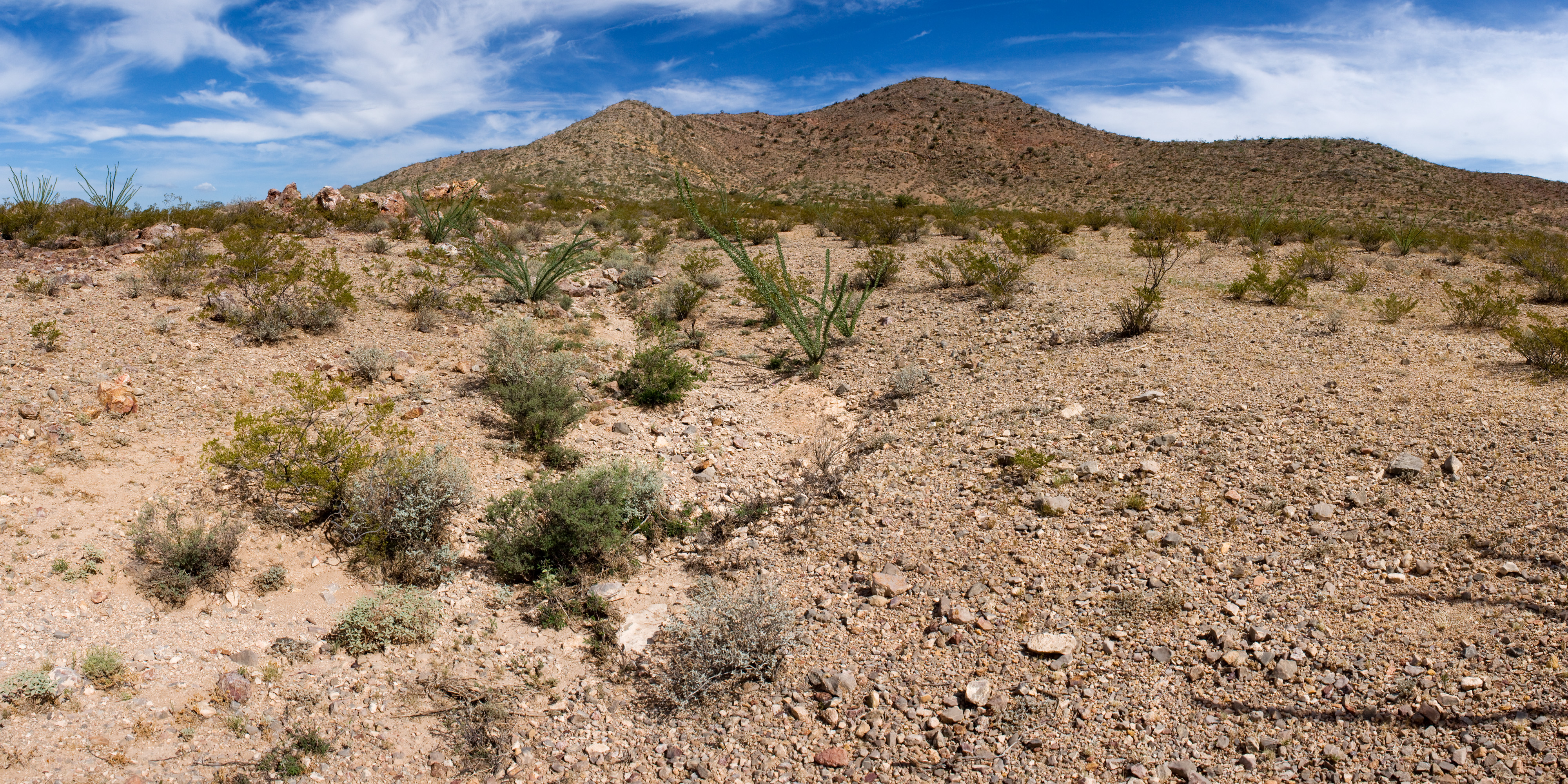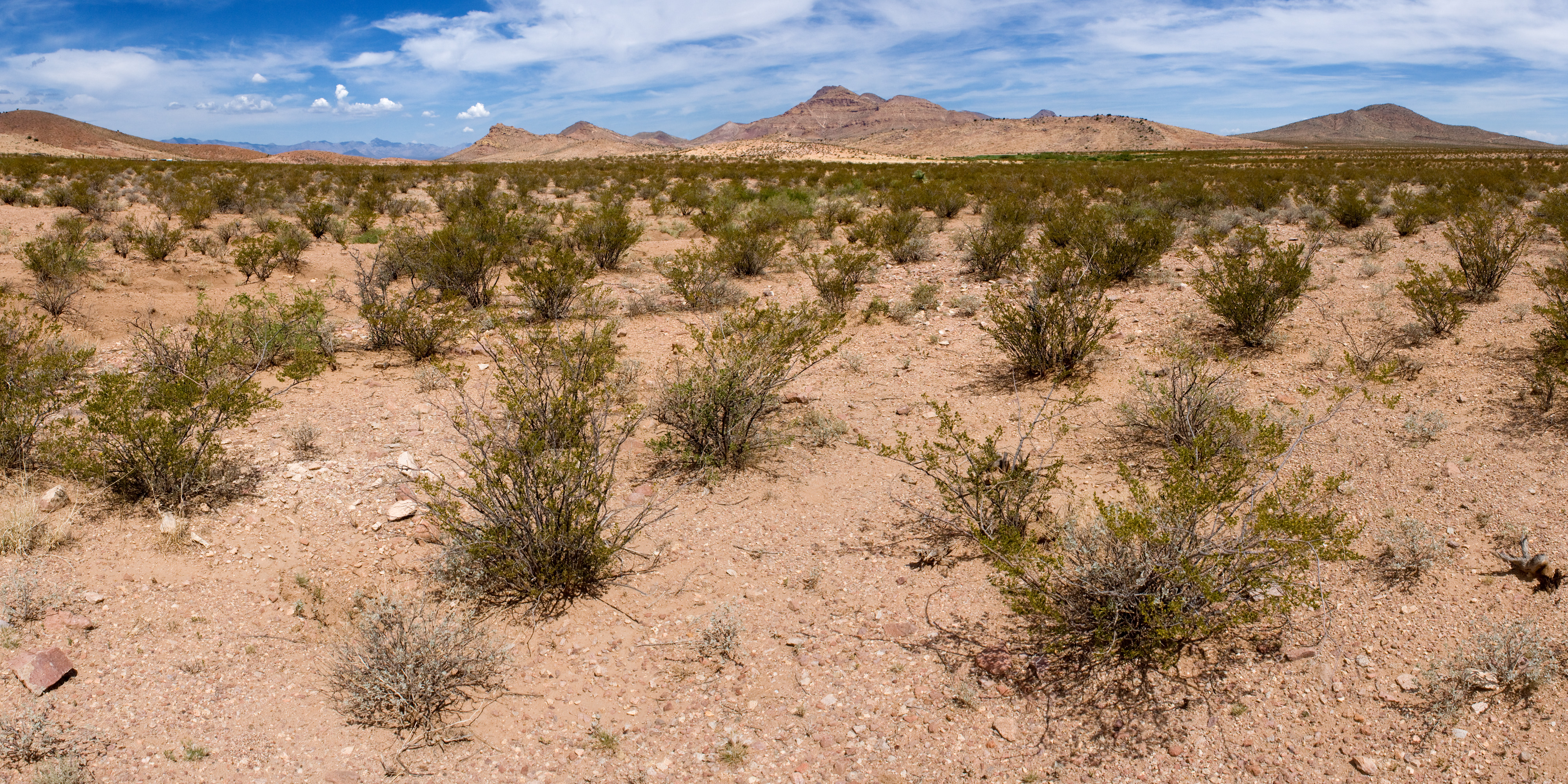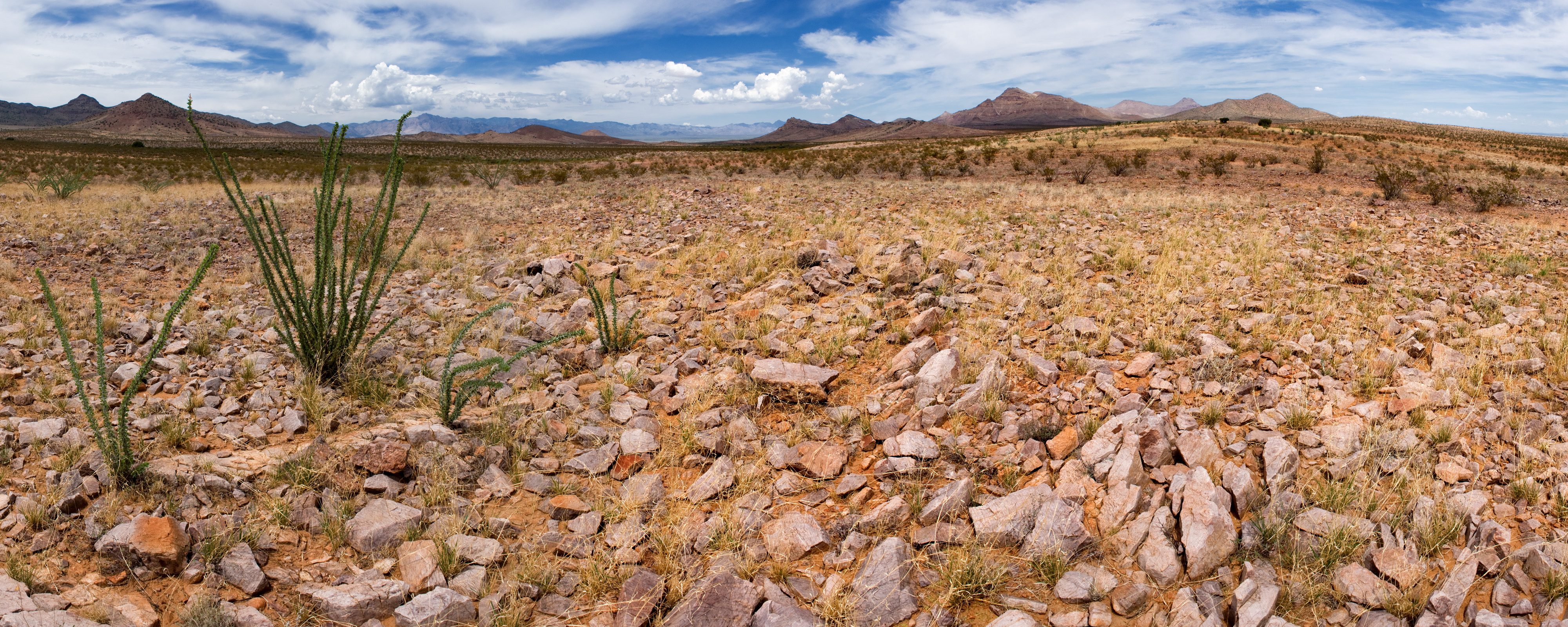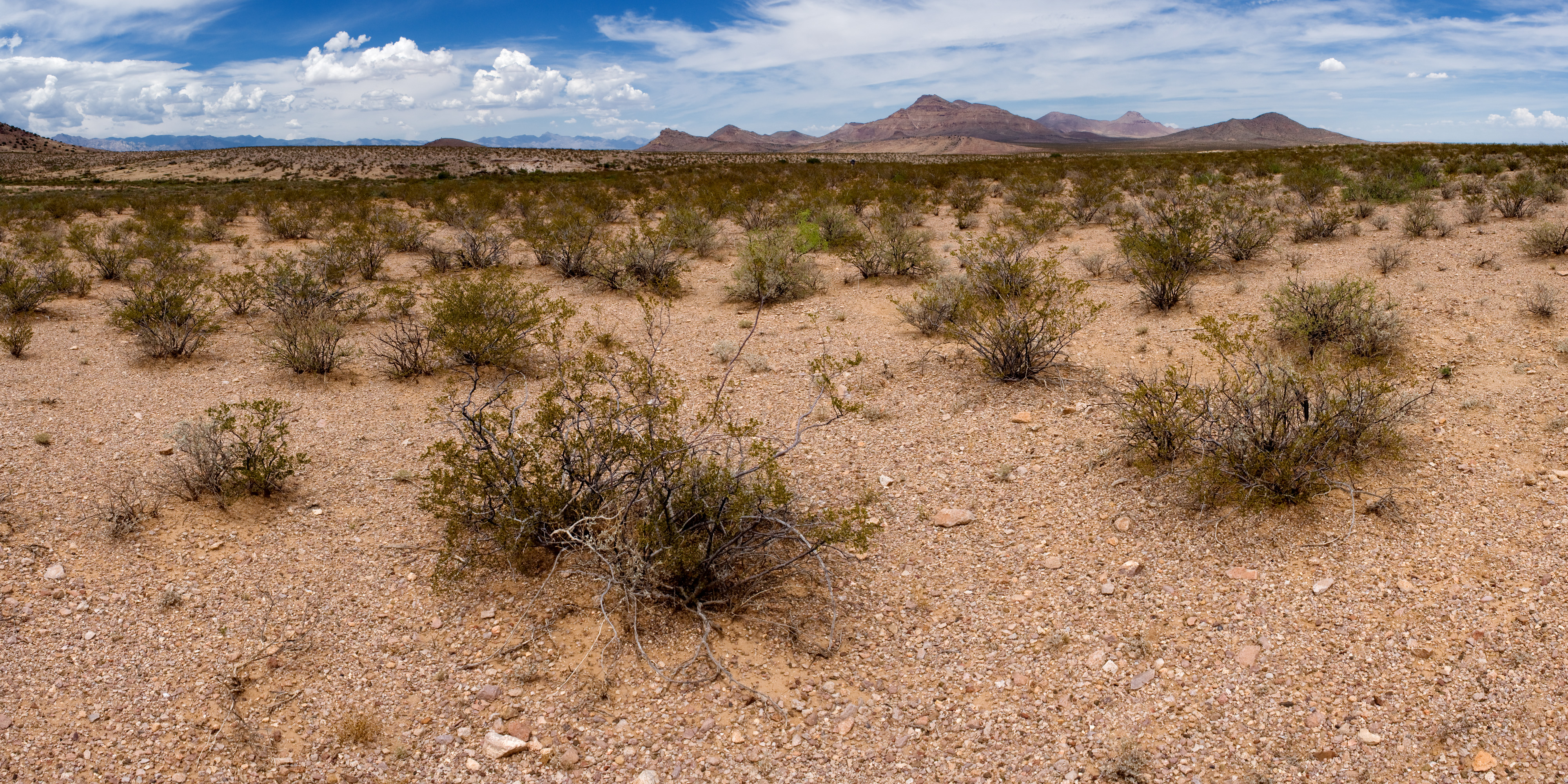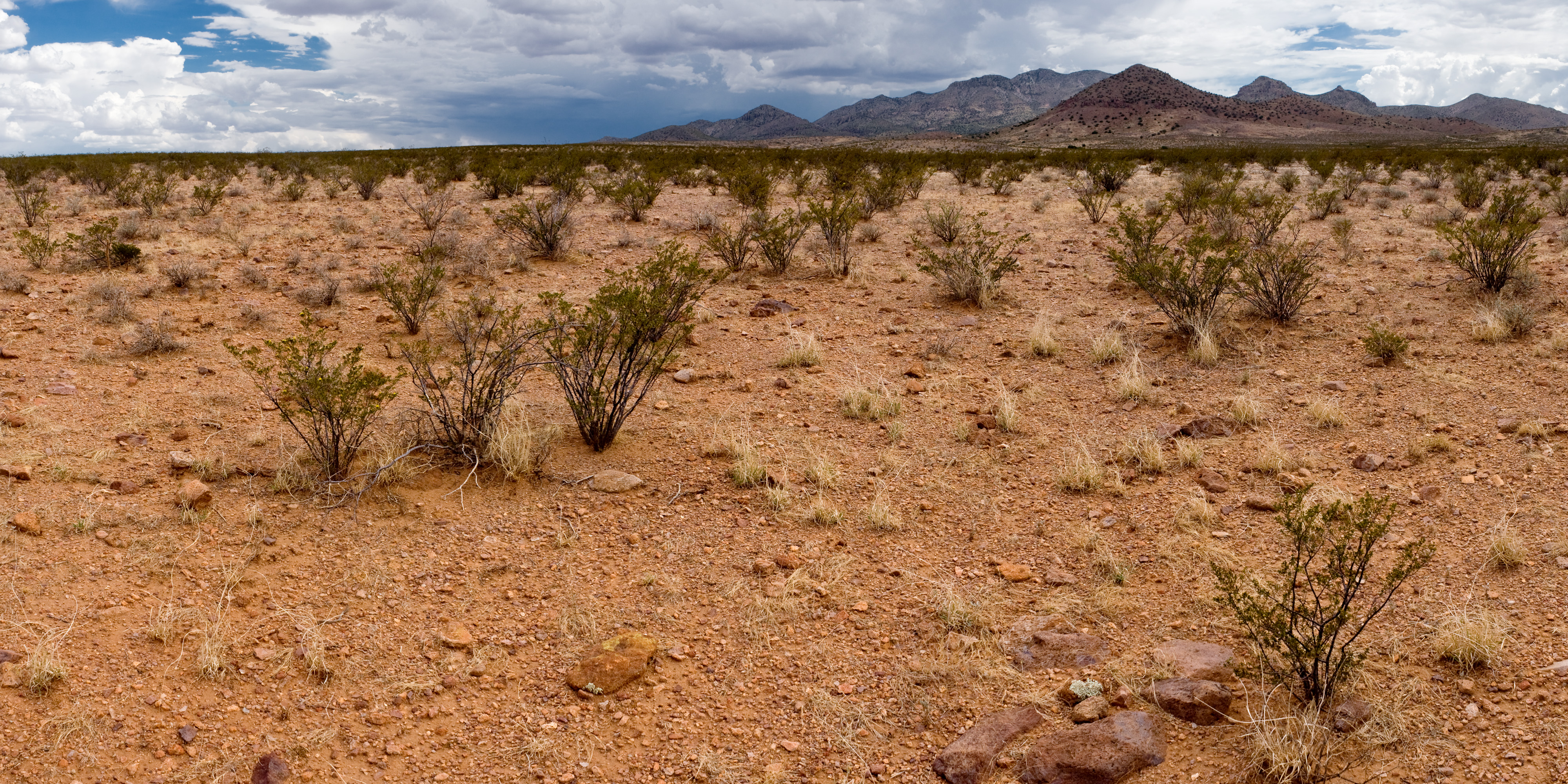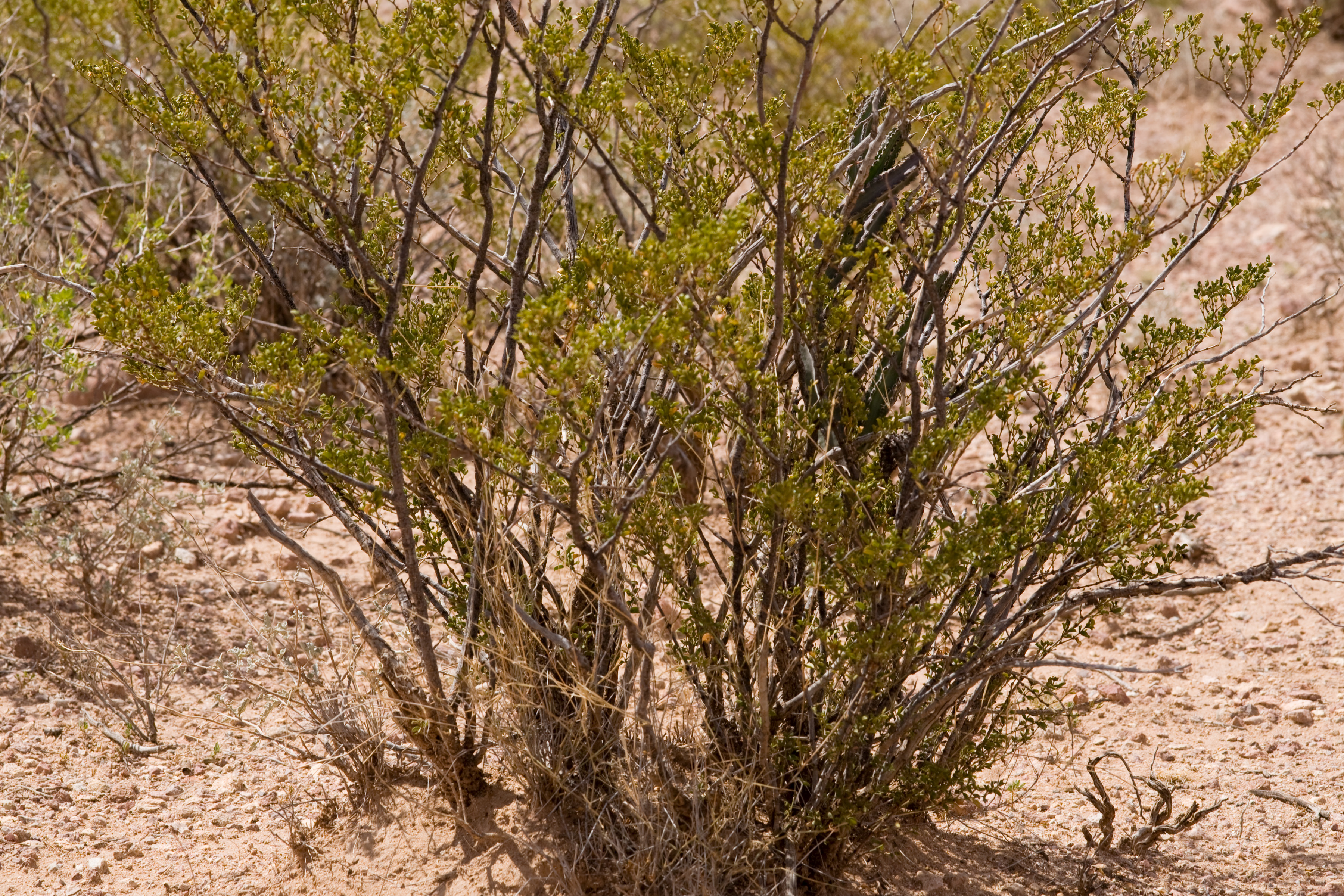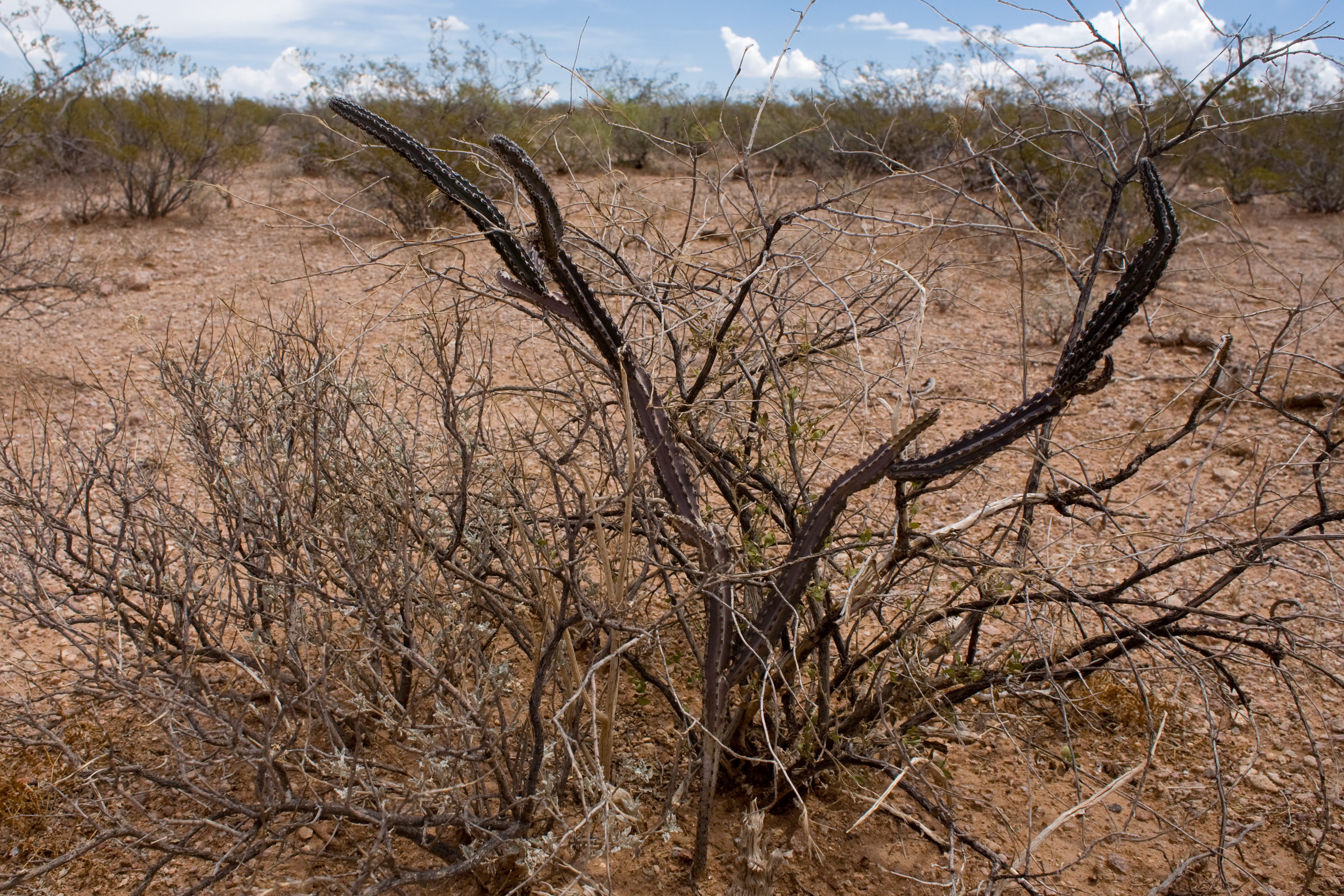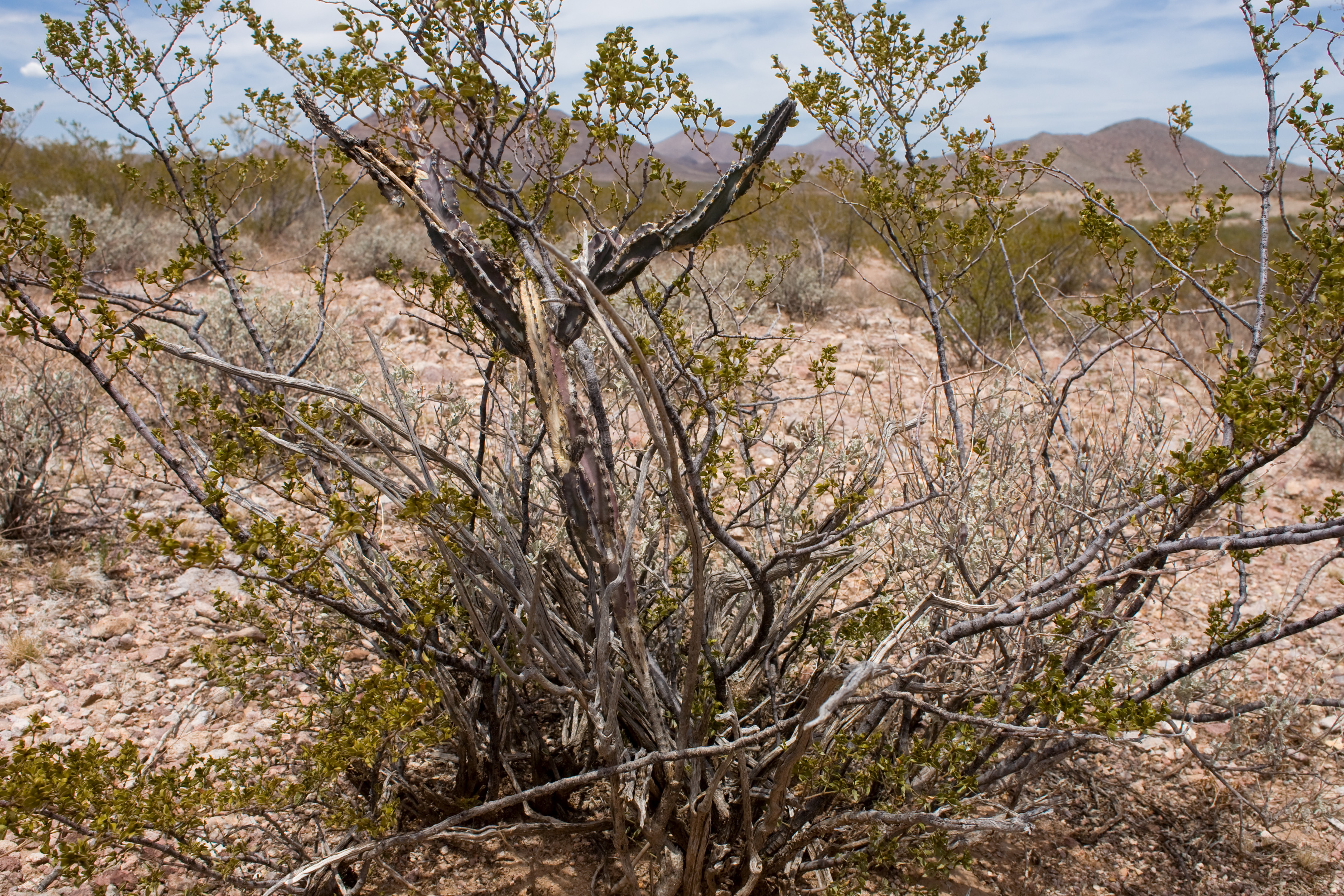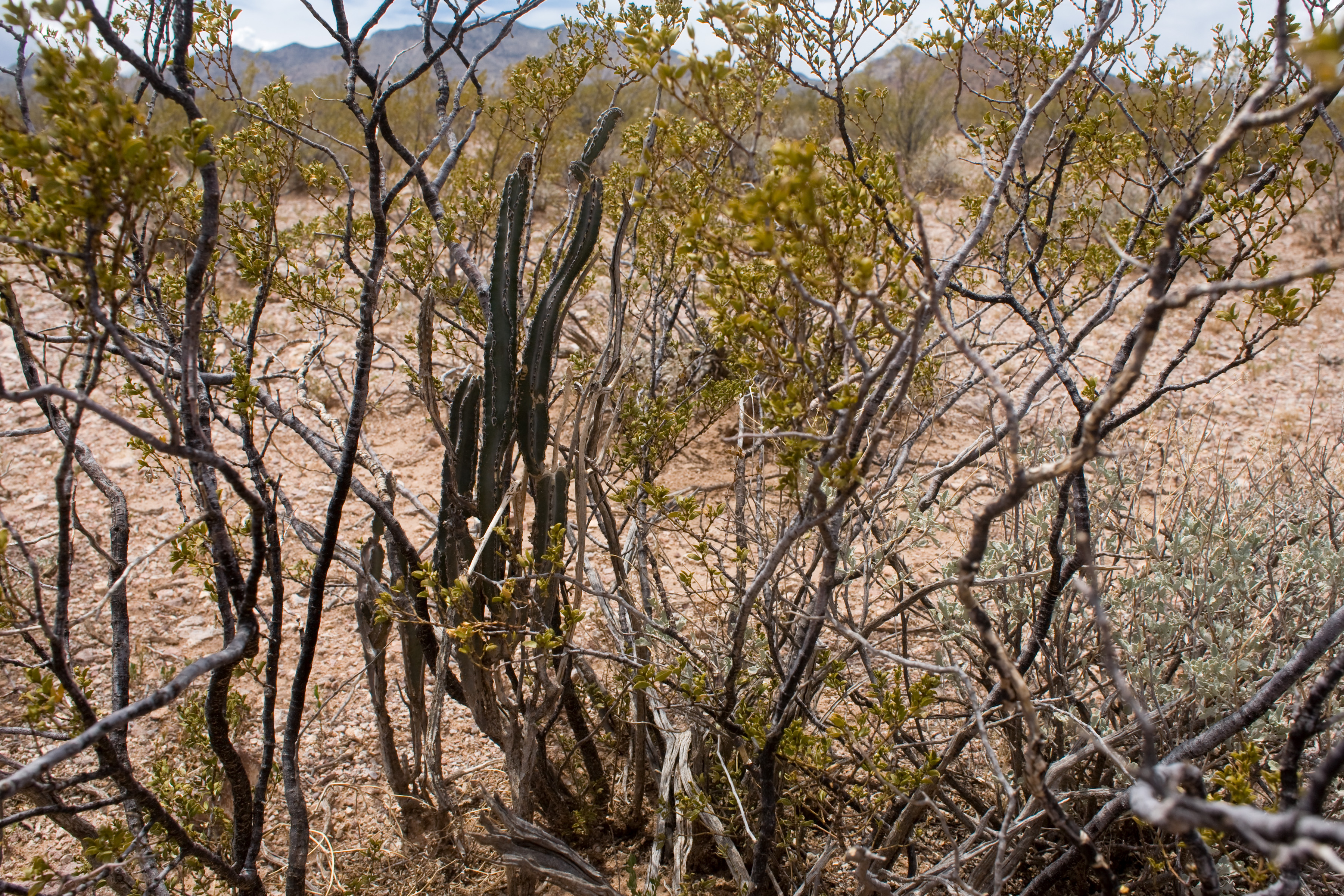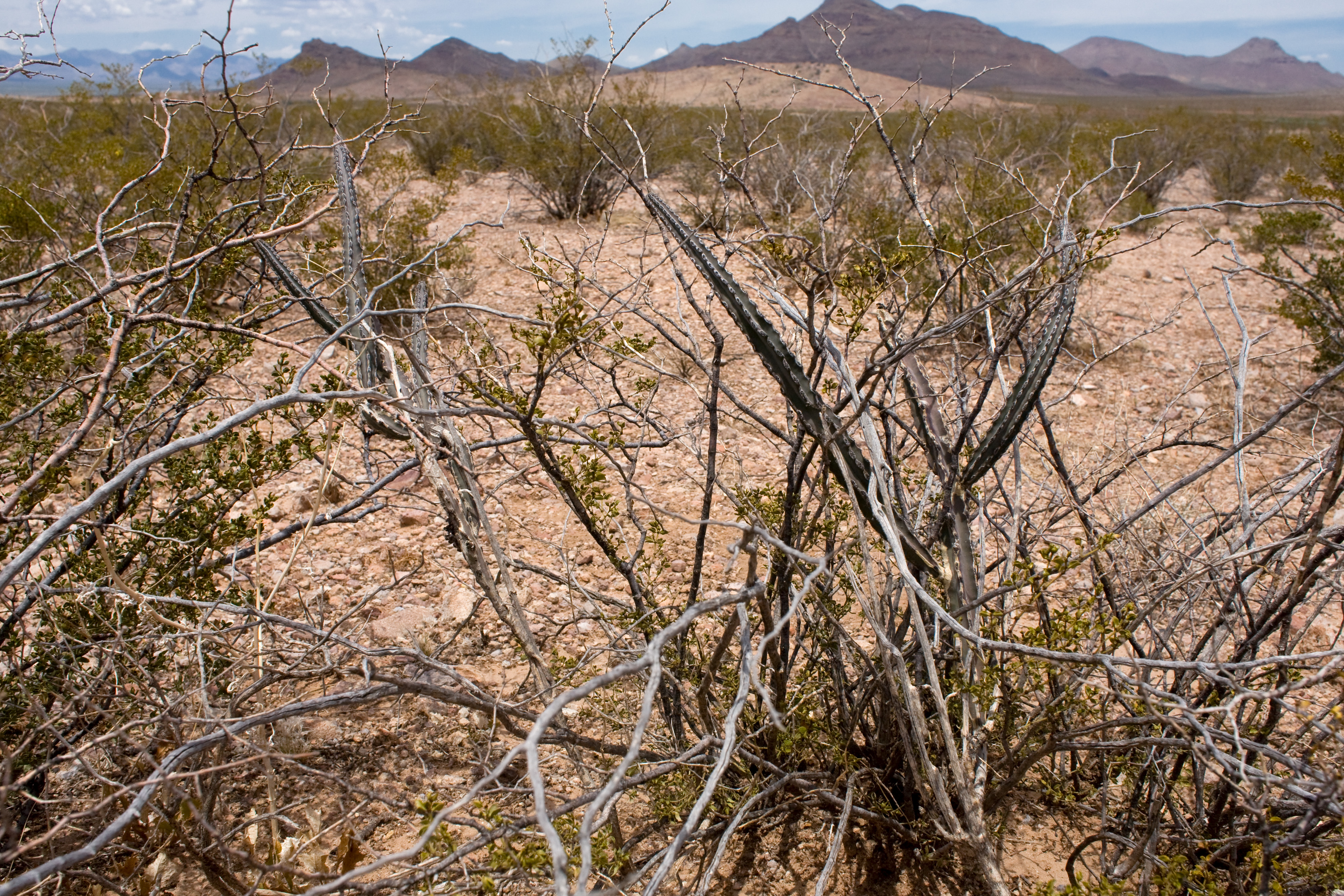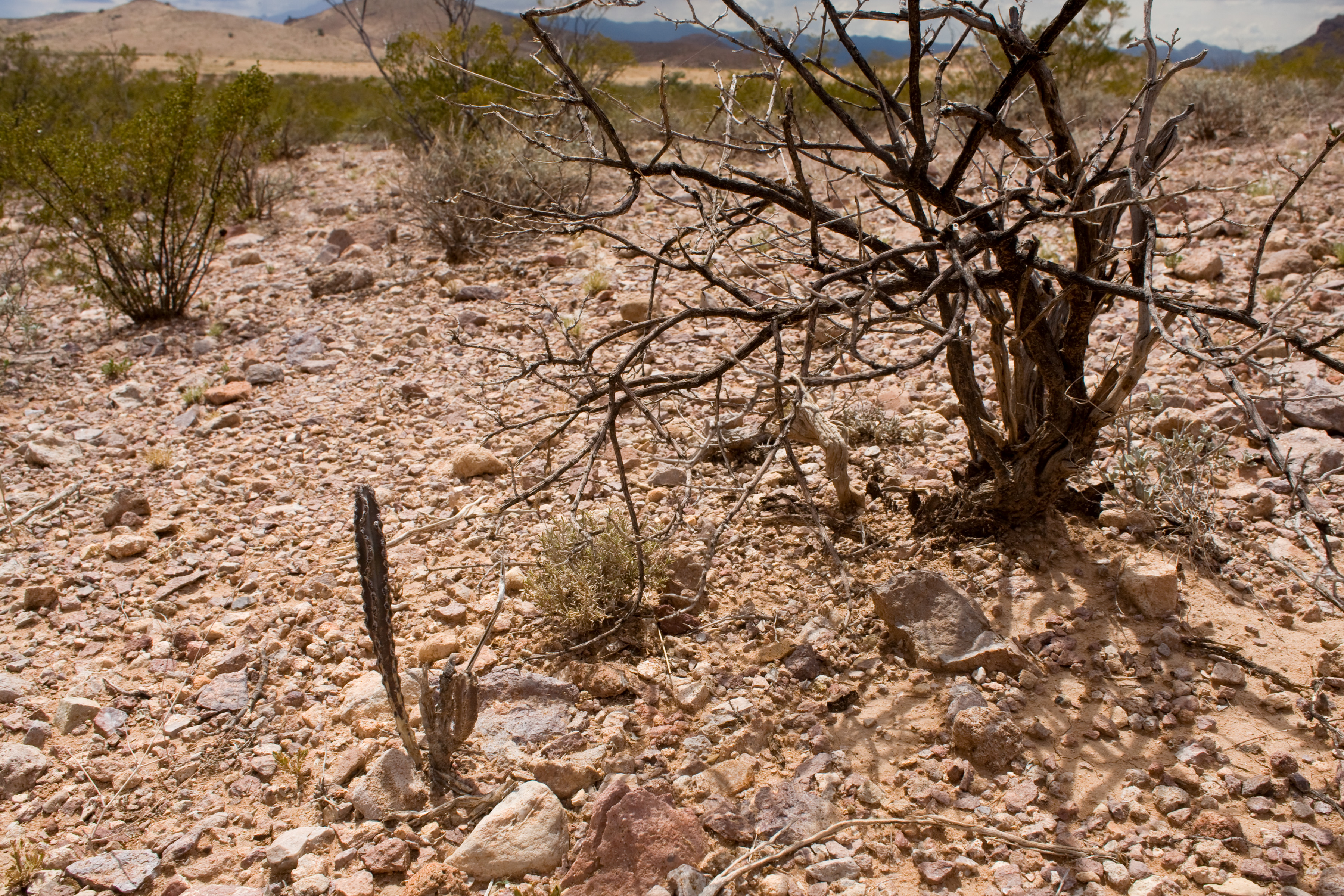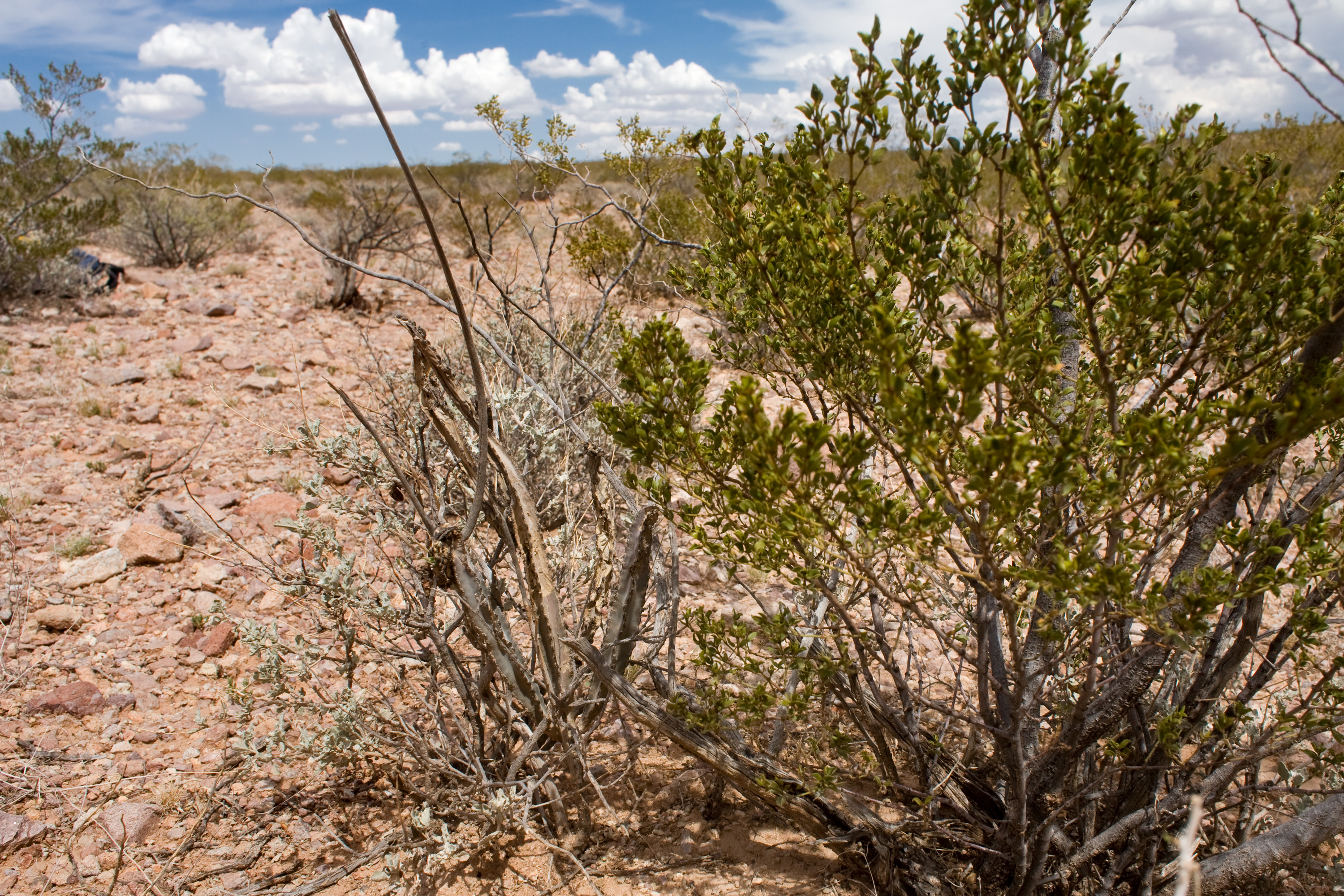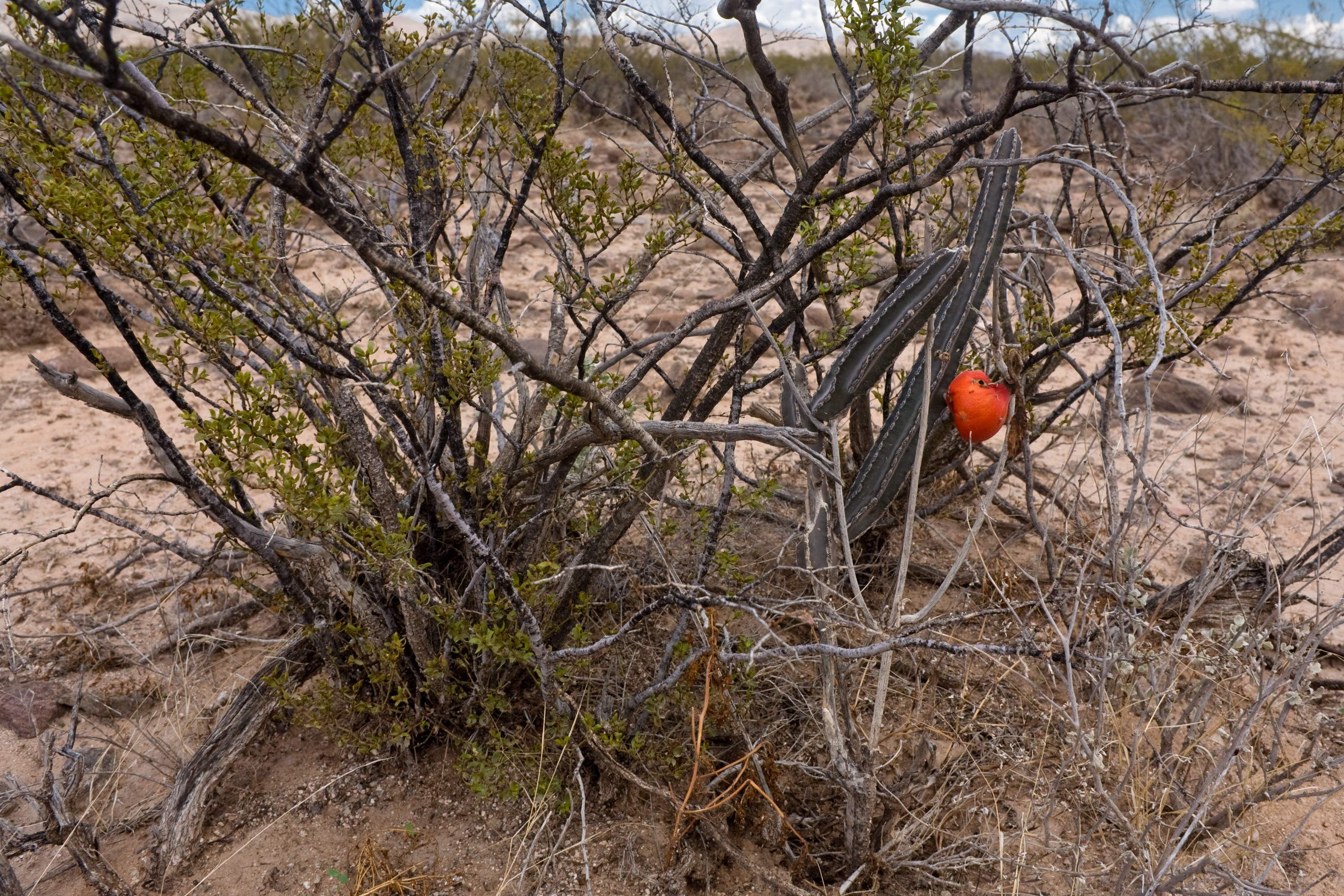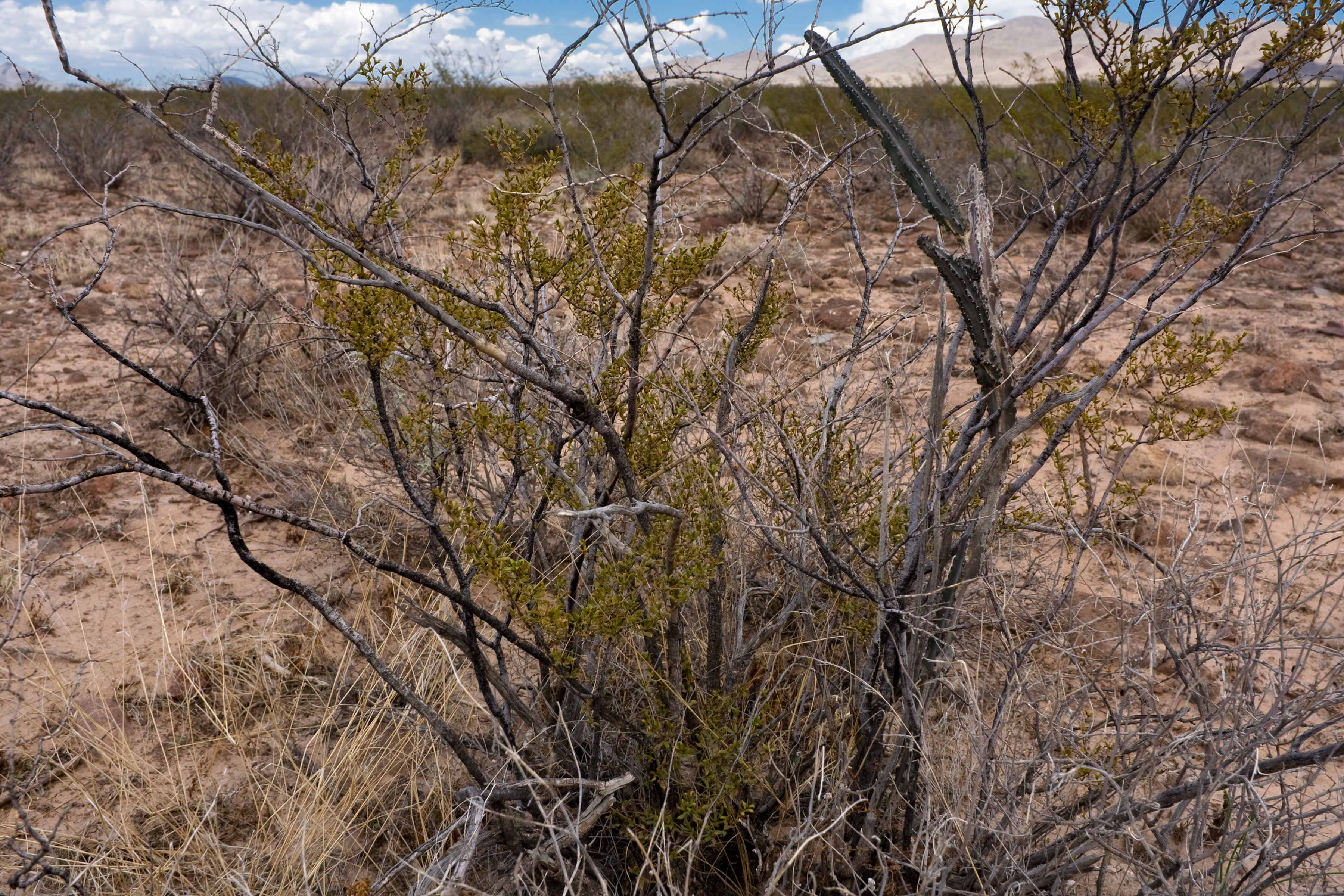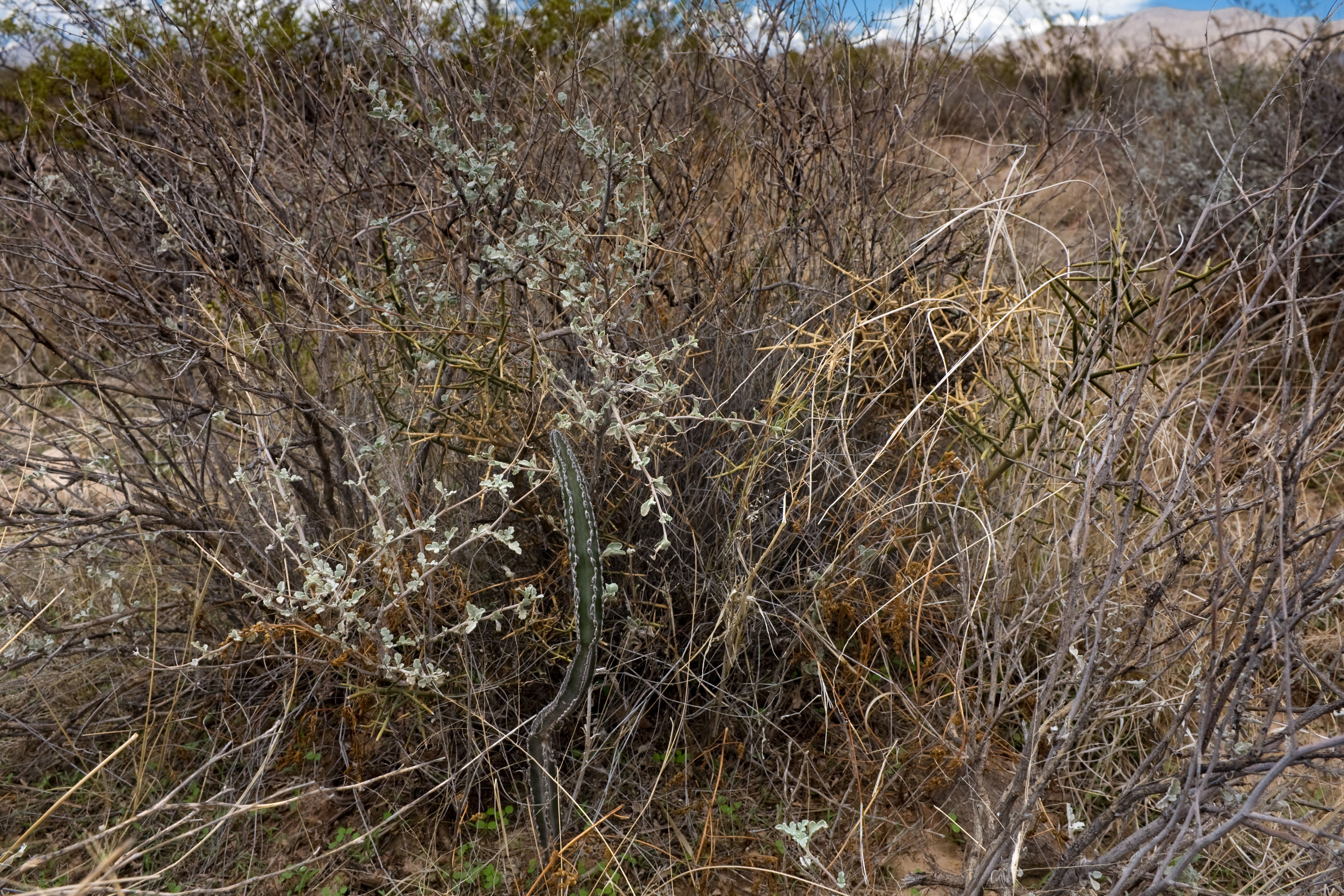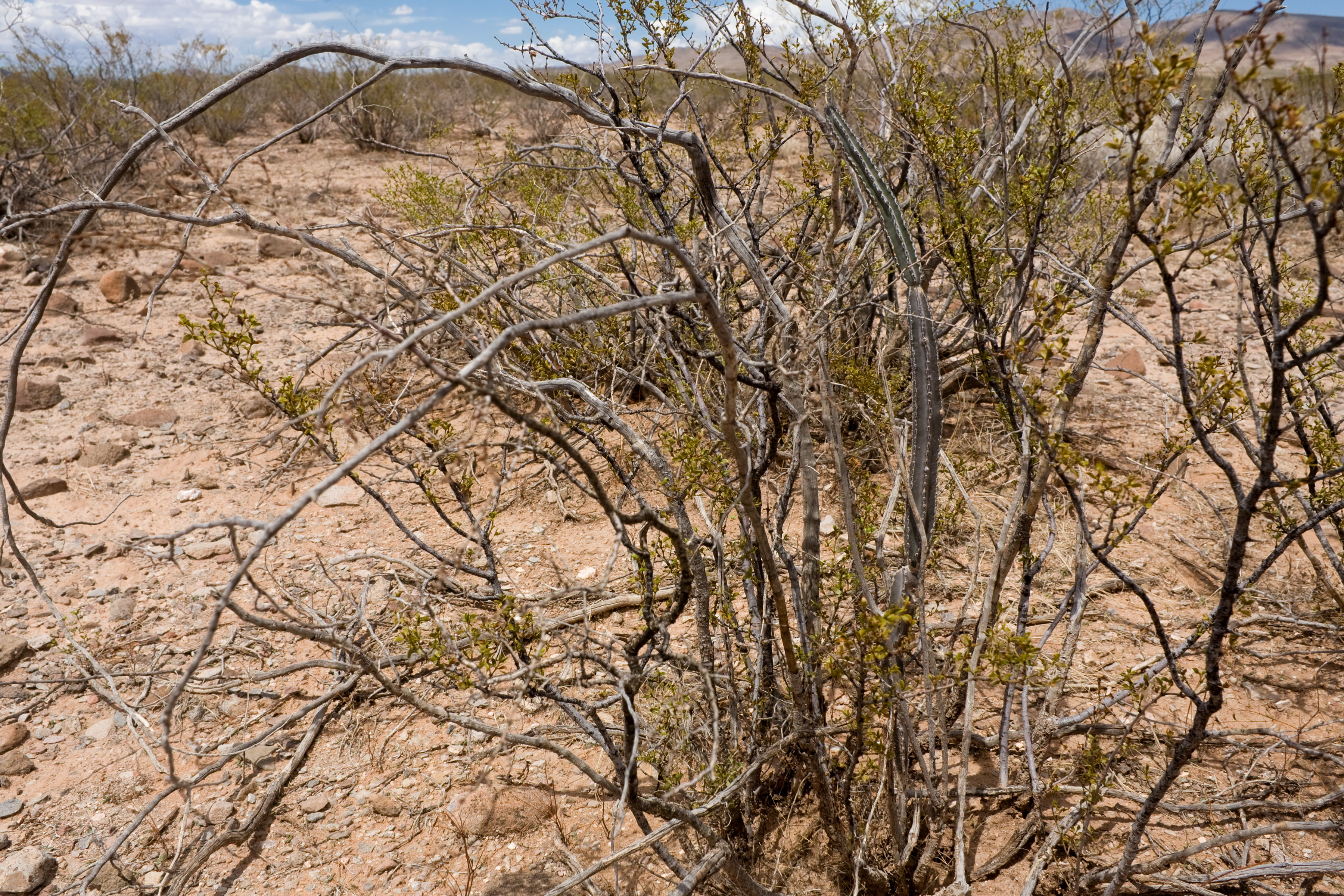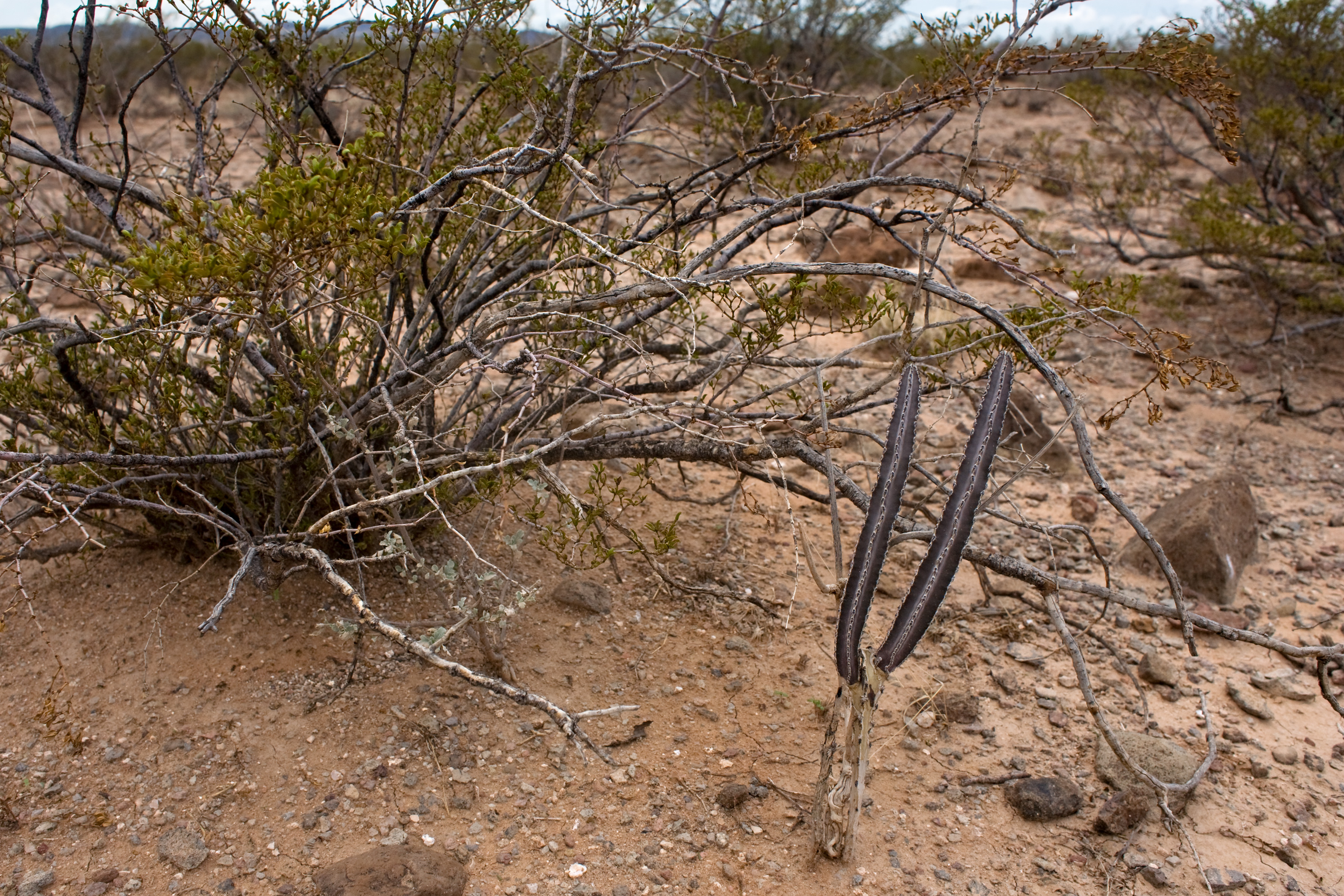Greetings,
The last couple of weeks, I have been supervising surveys for Pediomelum pentaphyllum and Peniocereus greggii var. greggii. In southern New Mexico, grassland was once extensive and dominated primarily by Bouteloua eriopoda, but overgrazing (especially in the 1890s) and perhaps other factors (climate change is a possible contributing factor) have resulted in most of our low-elevation grasslands being replaced by shrublands dominated by Larrea tridentata and Prosopis glandulosa. In an effort to reverse this trend, the BLM and others have been conducting herbicide treatments, primarily with pelleted tebuthiuron. Unfortunately, tebuthiuron is a fairly broad-spectrum herbicide, affecting most eudicots to some extent, and can therefore kill non-target plants… including rare ones! So, in areas where herbicide treatment has been proposed we go out and survey for rare plants to ensure that protected species are not being killed. Interestingly, there seems to be a spike in forb diversity in about the first decade after these herbicide treatments. The vegetation dynamics are not understood very well as yet, though, so when rare plants are involved we try to play it safe and exclude them from herbicide treatments.
In southwestern New Mexico, the rare species that might be adversely affected are usually Pediomelum pentaphyllum and Peniocereus greggii var. greggii. Most of the treatments that have been proposed for later this year and next year might affect Peniocereus greggii var. greggii but are unlikely to include plausible habitat for Pediomelum pentaphyllum, so Peniocereus greggii var. greggii has been our primary focus. We’ve been heading outside and walking lines at 100 meter intervals across these proposed treatments looking for it. We’ve found 16 plants on proposed treatments so far. Apart from helping us design these herbicide treatments to avoid rare plants, this lets us go outside and walk through pretty places! Here’s one of the areas we walked through last week, around Antelope Pass in Hidalgo County, New Mexico:
We have also encountered one of the hazards of botanizing in New Mexico: when the rains are good and plants are happy, the roads are bad. They get washed out. Arroyos that are dry 364 days a year are suddenly flooded. Low-lying areas that are usually hard clay become brown slime. So, this is a “road” (really, it is a road, we drove down it a couple weeks prior with no problem):
And this is a stuck truck, supervised by Michael Kolikant:
Finally, in an attempt to break the record for most pictures in a CLM blog post (if there is such a thing) here are a bunch of Peniocereus greggii var. greggii that we found. The basic problem with these critters is that they generally look an awful lot like dead sticks, and they usually live in the middle of shrubs (especially Larrea tridentata). This makes spotting them difficult. I think I’m getting the hang of it.
Yeah, that’s a lot of pictures of Peniocereus greggii var. greggii. However, my guess is that this is an average of 1 per 3 miles walked. They’re out there, but they are sparse and not easy to spot…

